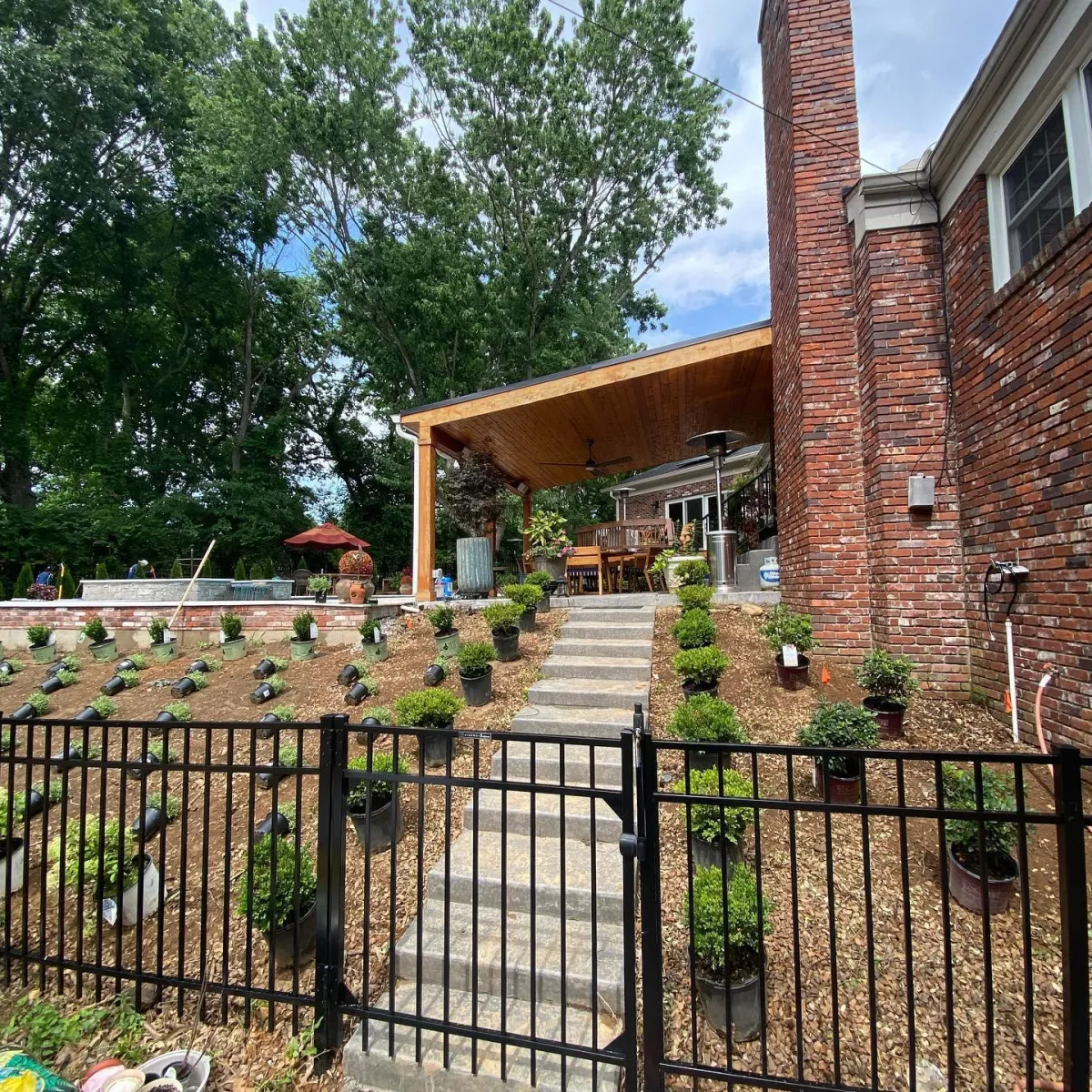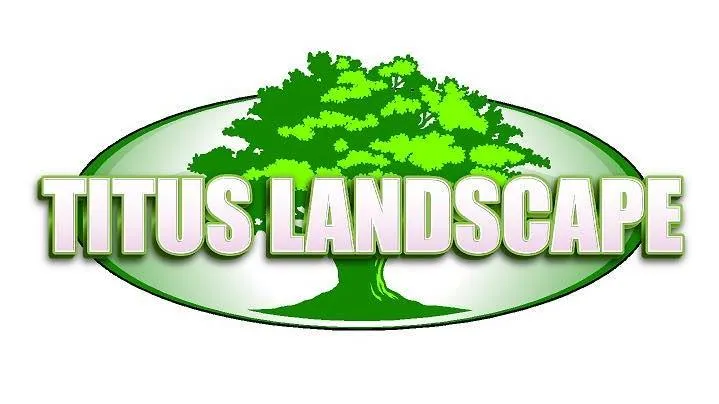Blogs

How Do I Choose The Right Plants For My Landscaping?
To choose the right plants for your landscaping, assess factors like your local climate, soil conditions, sun exposure, and desired maintenance level, then select plants that thrive in those conditions and complement your aesthetic preferences.
When it comes to landscaping, choosing the right plants can make all the difference. Your choice of plants can impact the aesthetics, maintenance requirements, and overall appeal of your outdoor space. But with so many options available, how do you know which plants are right for your landscaping project? In this guide, we'll explore the key factors to consider when selecting plants for your landscape, helping you create a beautiful and functional outdoor space that reflects your style and preferences.
At Titus Landscaping, we understand the significance of selecting the perfect plants for your outdoor oasis. Our team is dedicated to assisting you in making informed decisions that will enhance the beauty and functionality of your landscape. With our expertise and guidance, you can rest assured that your landscaping project will exceed your expectations.
Key Takeaways
Research your climate and environment: Choose plants that are well-suited to your hardiness zone and sunlight/shade conditions.
Assess soil quality: Conduct a soil test to determine your soil type and select plants accordingly.
Identify landscaping goals: Determine your desired theme or style and balance aesthetics with functionality.
Select low-maintenance options: Opt for native plants and drought-tolerant varieties to minimize upkeep.
Consider growth patterns and maintenance: Plan for the long-term by understanding plant growth habits and future maintenance needs.
Budget for plant costs: Factor in both initial planting expenses and long-term maintenance costs when selecting plants.
Understanding Your Climate and Environment
Understanding your climate and environment is essential when choosing plants for your landscaping project. Here are some key considerations:
Researching Hardiness Zones
Determine which hardiness zone you live in by referring to the USDA Plant Hardiness Zone Map. This will help you select plants that can thrive in your specific climate conditions.
Considering Sunlight and Shade Conditions
Assess the amount of sunlight and shade in your outdoor space throughout the day. Different plants have varying sunlight requirements, so it's crucial to choose species that match your garden's light levels.
Evaluating Temperature Extremes
Take note of temperature fluctuations in your area, including frost dates and heatwaves. Select plants that can withstand the temperature extremes typical for your region.
Assessing Soil Quality
Conduct a soil test to determine the pH level, texture, and nutrient content of your soil. This information will help you choose plants that are well-suited to your soil type.
Understanding Microclimates
Identify microclimates within your landscape, such as areas near buildings or trees that may have different temperature and moisture levels. Select plants that can adapt to these microclimate variations.
Considering Wind Exposure
Factor in the wind patterns in your area and choose plants that can withstand strong winds if your garden is exposed to them.
By thoroughly understanding your climate and environment, you can select plants that are best suited to thrive in your outdoor space, ensuring a successful and beautiful landscaping project. At Titus Landscaping, we're here to help you navigate these considerations and choose the perfect plants for your landscape.
Assessing Soil Quality
Before selecting plants for your landscaping project, it's essential to assess the quality of your soil to ensure optimal growing conditions. Understanding your soil's composition and characteristics will help you choose plants that are well-suited to thrive in your garden. Here's how to assess soil quality:
Conducting a Soil Test
Start by testing your soil's pH level, texture, and nutrient content using a home testing kit or by sending a sample to a local agricultural extension service. This will help you determine which plants will thrive in your soil.
Improving Soil Structure
If your soil is compacted or lacks organic matter, consider incorporating compost, organic mulch, or other soil amendments to improve drainage and fertility.
Choosing Plants Accordingly
Based on the results of your soil test, select plants that are well-suited to your soil type. For example, acidic-loving plants like azaleas and blueberries thrive in acidic soil, while succulents prefer well-draining sandy soil.
Monitoring Soil Moisture
Pay attention to how water drains in your garden and choose plants that can tolerate your soil's moisture levels. For example, drought-tolerant plants like lavender and yarrow are ideal for sandy soils with low water retention.
Implementing Sustainable Practices
Consider implementing sustainable soil management practices, such as mulching with organic materials to retain moisture, reduce erosion, and improve soil structure over time.
Identifying Your Landscaping Goals
Before embarking on a landscaping project, it's essential to identify your landscaping goals to ensure that your outdoor space reflects your vision and meets your needs. Let's delve into how to identify and prioritize your landscaping goals to bring your outdoor vision to life.
Creating a Theme or Style
Determine the overall look and feel you want to achieve in your landscape, whether it's a formal garden, a cottage-style retreat, or a native plant habitat.
Balancing Aesthetics with Functionality
Consider both the visual appeal and practical aspects of your landscaping, such as providing privacy, creating outdoor living spaces, or attracting pollinators and wildlife.
Reflecting Personal Preferences
Tailor your landscaping choices to reflect your personal taste and lifestyle preferences, whether you prefer low-maintenance plants, vibrant flower beds, or edible gardens.
Considering Future Plans
Think about how your landscaping goals may evolve over time and choose plants and design elements that can adapt to future changes, such as adding or removing trees and shrubs or expanding outdoor living areas.
Seeking Professional Advice
If you're unsure about your landscaping goals or need help translating your vision into a cohesive design, consider consulting with a professional landscaper or garden designer for expert guidance.
Your landscaping goals will serve as the guiding principles for your project, influencing decisions about design, plant selection, and maintenance. By clearly defining your objectives, you can create a landscape that enhances your home's aesthetics, functionality, and enjoyment.
Selecting Low-Maintenance Options
When it comes to landscaping, choosing low-maintenance plants can significantly reduce the time and effort required to keep your outdoor space looking its best. By selecting plants that are well-suited to your climate and soil conditions and require minimal care, you can enjoy a beautiful landscape with less maintenance. Here are some strategies for selecting low-maintenance options:
Choosing Native Plants
Native plants are inherently adapted to your local environment, making them naturally low-maintenance. They require less water, fertilizer, and pest control compared to non-native species, making them an excellent choice for sustainable landscaping.
Incorporating Drought-Tolerant Varieties
Drought-tolerant plants are well-suited to regions with limited water resources and require minimal watering once established. Look for plants such as succulents, ornamental grasses, and Mediterranean herbs that can thrive in dry conditions with minimal intervention.
Opting for Perennials
Perennial plants come back year after year, reducing the need for replanting and saving you time and effort in the garden. Choose perennial flowers, shrubs, and trees that are well-adapted to your climate and require minimal pruning and maintenance.
Utilizing Groundcovers
Groundcover plants serve multiple purposes in the landscape, suppressing weeds, retaining soil moisture, and reducing erosion. They require little maintenance once established and can serve as a living mulch, covering bare soil and providing a uniform carpet of greenery.
Avoiding High-Maintenance Plants
Some plants are inherently high-maintenance, requiring regular pruning, fertilizing, and pest control to keep them looking their best. Avoid these plants and opt for low-maintenance alternatives to minimize the time and effort required to care for your landscape.
By incorporating low-maintenance plants into your landscaping design, you can create a beautiful outdoor space that requires minimal care and allows you to spend more time enjoying your garden. At Titus Landscaping, we're here to help you select the perfect plants for your landscape, ensuring a beautiful and functional outdoor space with minimal maintenance requirements.
Crafting Your Perfect Landscape with Titus Landscaping
Choosing the right plants for your landscaping project is a crucial step in creating a beautiful and functional outdoor space. By considering factors such as climate, soil quality, maintenance requirements, and budget, you can select plants that thrive in your environment and enhance the overall aesthetics of your landscape.
At Titus Landscaping, we're dedicated to helping you bring your outdoor vision to life, whether you're looking to create a lush garden retreat or a low-maintenance landscape design. Contact us today to learn more about our landscaping services and start transforming your outdoor space into a place you'll love to call home.
Transform Your Outdoor Space with Titus Landscaping
Ready to turn your landscaping dreams into reality? Contact Titus Landscaping today to schedule a consultation with our team of experienced professionals.
Whether you're interested in landscape design, hardscaping, or outdoor living features, we're here to help you create a beautiful and functional outdoor space that reflects your style and preferences. Let us bring your vision to life and transform your outdoor space into a place where memories are made and cherished for years to come.
Contact us now to get started on your landscaping journey!
THE BEST IN LANDSCAPE & OUTDOOR LIVING
Get your free quote today!
Contact Us
Rockvale, Tennessee 37153
Mon - Fri 8:00 am - 6:00 pm
Follow Us
© 2024 Titus Landscape. All Rights Reserved. Privacy Policy. Terms & Conditions. Web Design by Fused Media

